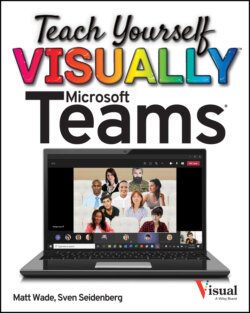Читать книгу Teach Yourself VISUALLY Microsoft Teams - Matt Wade - Страница 6
ОглавлениеForeword
Since Microsoft Teams was announced to the world in 2016, a lot has changed. But one thing that has not changed is the profound need to stay connected to one another and to collaborate closely in an ever-changing world. Now, more than ever, we require virtual tools that allow for human connection. Though nothing will replace in-person interactions, Teams strives to bring features and functionality that simulate in-person experiences with goals of decreasing meeting fatigue and increasing engagement.
Throughout 2020, we saw tremendous growth due to the global pandemic, which required an enormous amount of pivoting for customers, partners, and the Teams engineering team. Educational and financial institutions, manufacturers, healthcare facilities, and first-line workers around the world learned to survive virtually. Partners sprung into action helping organizations roll out Microsoft Teams, and the engineering team changed course to prioritize features suddenly required for this new world. Over six months, Teams increased usage by more than 50 percent to 115 million daily active users (between March and October 2020). The reality is, to get the most out of Teams, organizations need to have an organized, strategic roll-out plan taking into consideration their own use cases and focusing on governance and compliance. The same organizations that were forced to a virtual environment overnight can now circle back to capitalize on the investment and prepare for a time where we are living and working in a hybrid environment.
I like to say, you can show someone how Teams works, and it’s nice and bright and shiny—enough to make even the least technical person say, “Wow, that’s pretty awesome”—but until users really see how it can be used in their daily workflow, they won’t make the leap. Matt and Sven—two of the most knowledgeable Teams experts I know—have extensive experience in rolling out Teams with a variety of global customers across multiple verticals, and they focus on the detailed technical implementation and ongoing management, the opportunities to use Teams as a platform, and adoption best practices and practical guidance based on real-world examples. They share how to facilitate a technically sound deployment while getting users excited to use Teams. And you’re going to get all that and more in this book.
I first met Matt a few years ago at Microsoft Ignite—our annual flagship international tech conference—through the various Microsoft MVP interactions we had and immediately saw the passion he had for M365 and Teams. He is often one of the first to provide product feedback to the engineering team based on his customer deployments and always the first to spin up a conversation around the user experience. I started seeing Sven on LinkedIn, and I was immediately interested in the “fun” element he prioritizes for creating excitement around user adoption. We’ve never met in person, but that doesn’t mean work within our community doesn’t make its way around the world. That’s the great thing about this community: Two strangers meet—in person or digitally—because of a shared passion for technology. They share stories, they debate best practices, and they come together to share those experiences with you. I have no doubt you’ll find value in the information in the pages ahead.
Laurie Pottmeyer
Senior Program Manager,
Microsoft Teams Engineering Community Lead
